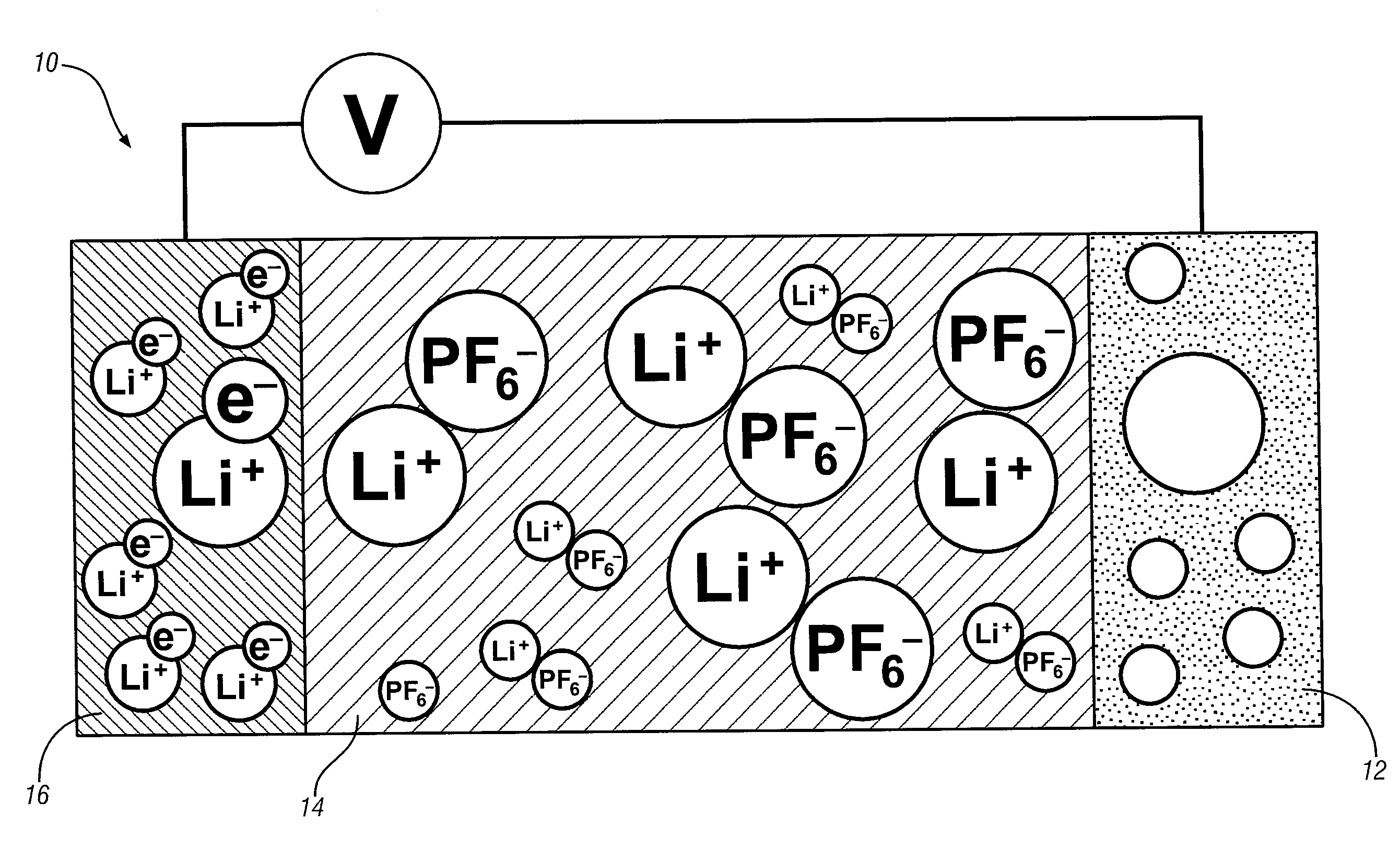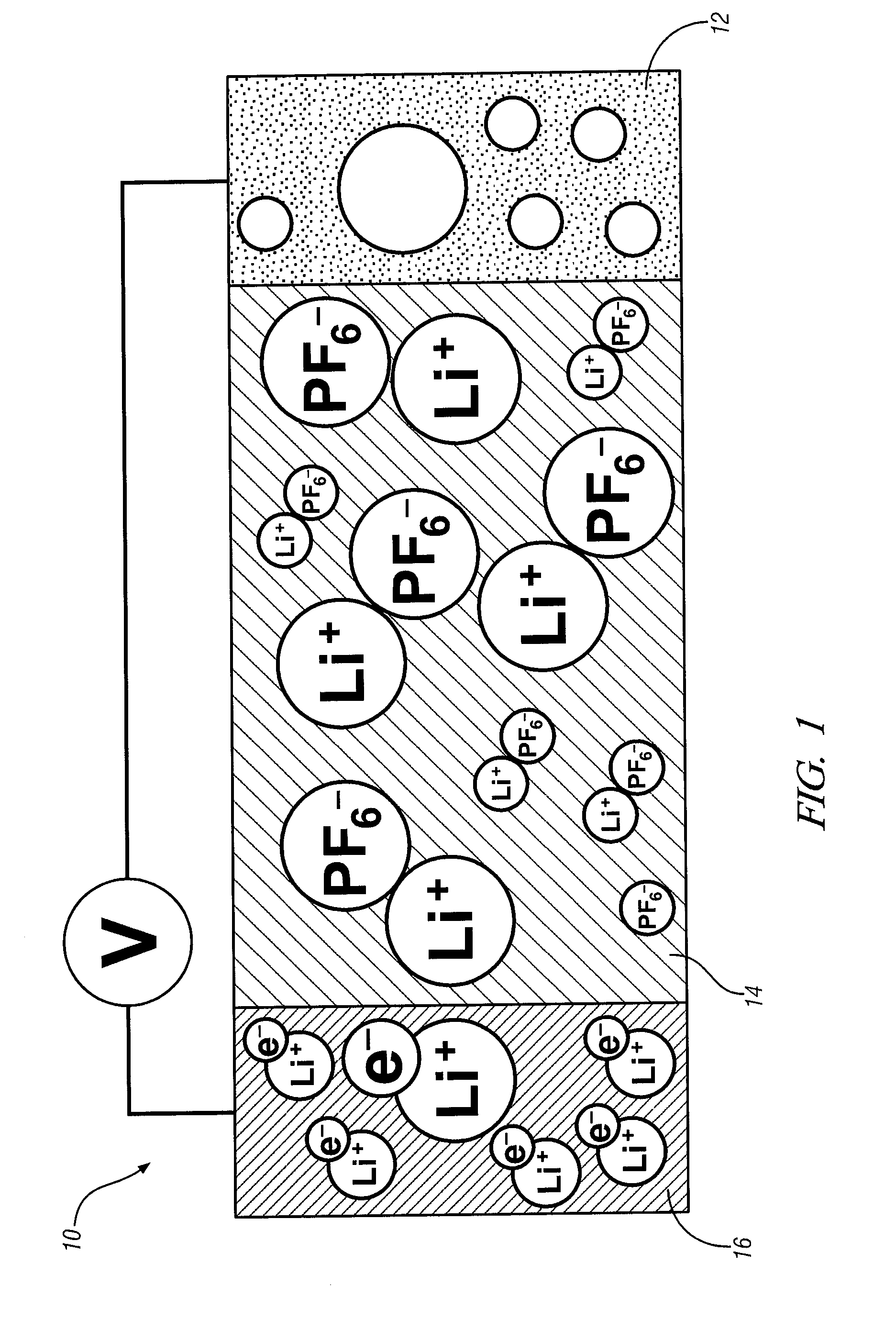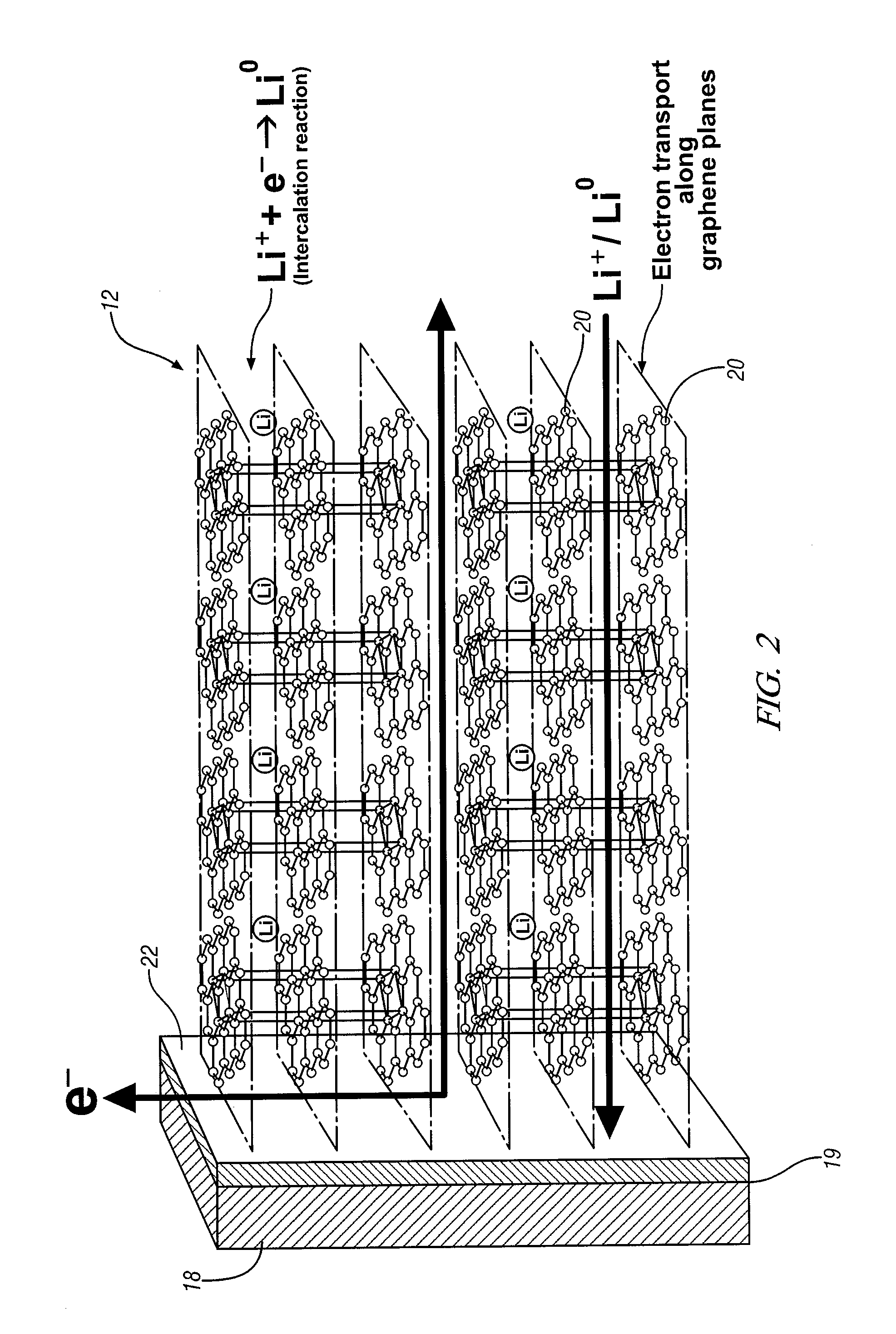[0006]A focus of one embodiment is on the construction of a planar carbon electrode structure that enables efficient and repeated transport of
metal atoms / ions into and out of the planes of the carbon electrode structure. A timely need for such a structure is as a lithium intercalated, planar carbon anode for a lithium-ion battery. In a lithium-ion battery, the anode material experiences repeated charging and discharging in which lithium atoms and ions must move into and out of the planar graphene
layers.
[0008]
Graphene is now recognized as a more or less idealized arrangement of carbon atoms in a single planar sheet of sp2-bonded carbon atoms in
large array of hexagonal clusters, like atomic-scale chicken wire. In accordance with embodiments of this invention, a metallic
electron collector substrate for an
electrochemical cell electrode is selected and prepared, and graphene planes are formed in situ on a surface of the collector material. The graphene planes may be formed by deposition of carbon atoms from a gaseous carbon-precursor material such as, for example,
methane or
acetylene.
Chemical vapor deposition practices, compositions, and apparatus are usually suitable for the growth of graphene planes, side-by-side, and generally perpendicular to the metallic
electron collector substrate. This organized arrangement of graphene planes perpendicular to the electron collector plate provides an electrode structure for efficient transport of
metal atoms and ions between the electrode and a complementary
electrolyte.
[0010]Sometimes the selected current collector
metal inherently promotes or catalyzes the
decomposition of the carbon-precursor gas and the deposition of carbon atoms in graphene planes generally perpendicular to the metal electron-collector surface. Where a selected collector metal, such as
copper, does not readily promote the
decomposition of (for example)
methane, a thin deposit of clusters of atoms (or a
thin layer) of a
transition metal such as
nickel, iron,
cobalt,
platinum, or their alloys may be pre-deposited on the
copper surface to serve as a catalyst. An ordered graphene planar anode structure is then formed by
chemical vapor deposition that is enhanced by this catalyst deposit. Subsequent
insertion or intercalation of lithium in the parallel planes of the graphene matrix is efficient and involves the formation of some electron bonding between the lithium and the intercalation host. The resulting electrode is dense, of increased
volumetric efficiency relative to the conventional particulate-based electrode described previously, and more efficient because electronically insulating polymeric binders are not required; this latter attribute also leads to a cost reduction through reduced material utilization.
[0011]In some embodiments of the invention, a
thin layer of silver, gold, or alloys thereof is deposited over the current collector substrate to provide a bondable ductile interface between the current collector and edges of graphene planes. The graphene planes may be formed directly on this ductile metallic interlayer, or promoted by a thin catalytic deposit of
nickel, iron,
cobalt,
platinum, or their alloys over the ductile metallic layer. In one embodiment, after the graphene
layers have been formed, the total coated electrode may be heated in vacuum or in
inert gas such as
argon to enable melting and / or
softening of the layer of silver, gold, or their alloys, to allow this layer to flow around the edges of the graphene planes to bond the graphene planes to the current collector
substrate surface. A silver layer is especially ductile and will expand as the graphene planes separate to receive lithium atoms or another intercalated material for an electrode. At the same time, the
thin layer of silver, gold or their alloys can reduce the
contact resistance between graphene layer and current collector in the case of the formation of
amorphous carbon at the early stage. The reheating step also serves to anneal any defects present in the graphene
layers in addition to the enhanced bonding due to the
wetting of the graphene junctions with silver, gold, or their alloys.
 Login to View More
Login to View More  Login to View More
Login to View More 


